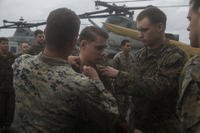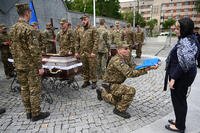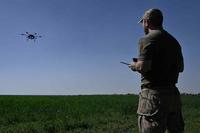The head of the Air Force’s Air Combat Command is not surprised that Boeing Co. and Lockheed Martin Corp. are protesting the service’s multi-billion contract award for its Long Range Strike Bomber to Northrop Grumman Corp.
Gen. Herbert “Hawk” Carlisle said he’s confident the protest will not derail the development of the service’s next-generation bomber.
“We kind of anticipated this,” Carlisle told Military.com Tuesday morning during an breakfast with defense reporters in Washington, D.C. “Corporations, companies — there is a lot of money involved. If they go back to their board of directors [without the contract], it’s the kind of thing they have to look hard at.”
Defense Department and Air Force officials overseeing the contracting “worked really, really hard to do the program as proper and as pure as we could so that we were not open to questions about how we conducted the source selection,” Carlisle said. “I think we’ll find out how we did as we go forward.”
The contract awarded on Oct. 27 includes $21.4 billion for engineering and manufacturing development of the bomber, according to the Air Force. Adjusted for inflation, the unit cost per plane is $564 million per plane in 2016 dollars, assuming an order of 100 aircraft, Bill LaPlante, head of Air Force acquisition, has said.
Boeing and Lockheed, which teamed up to compete for the contract, lodged a protest with the Government Accountability Office, claiming the process was “fundamentally flawed.”
“The cost evaluation performed by the government did not properly reward the contractors’ proposals to break the upward-spiraling historical cost curves of defense acquisitions, or properly evaluate the relative or comparative risk of the competitors’ ability to perform, as required by the solicitation,” the companies said in a joint statement.
Northrop Grumman rejects the claim.
Corporate Vice President and President of Aerospace Systems Tom Vice told company employees and others celebrating the deal at a company hangar at Melbourne International Airport, Florida, that the contract was awarded based on the company’s past work on the B-2 Spirit bomber and in developing stealth technology.
The only group surprised by who the Air Force chose “is the team that’s never done this before,” the newspaper Florida Today quoted him as saying.
The Air Force currently has 158 bombers, including 76 B-52 Stratofortresses, 63 B-1 Lancers and 20 B-2 Spirits, yet with the exception of the latter, many are susceptible to precision-guided weapons developed by China, Russia, Iran and North Korea.
–Brendan McGarry contributed to this report.
–Bryant Jordan can be reached at bryant.jordan@military.com. Follow him on Twitter at @bryantjordan.









